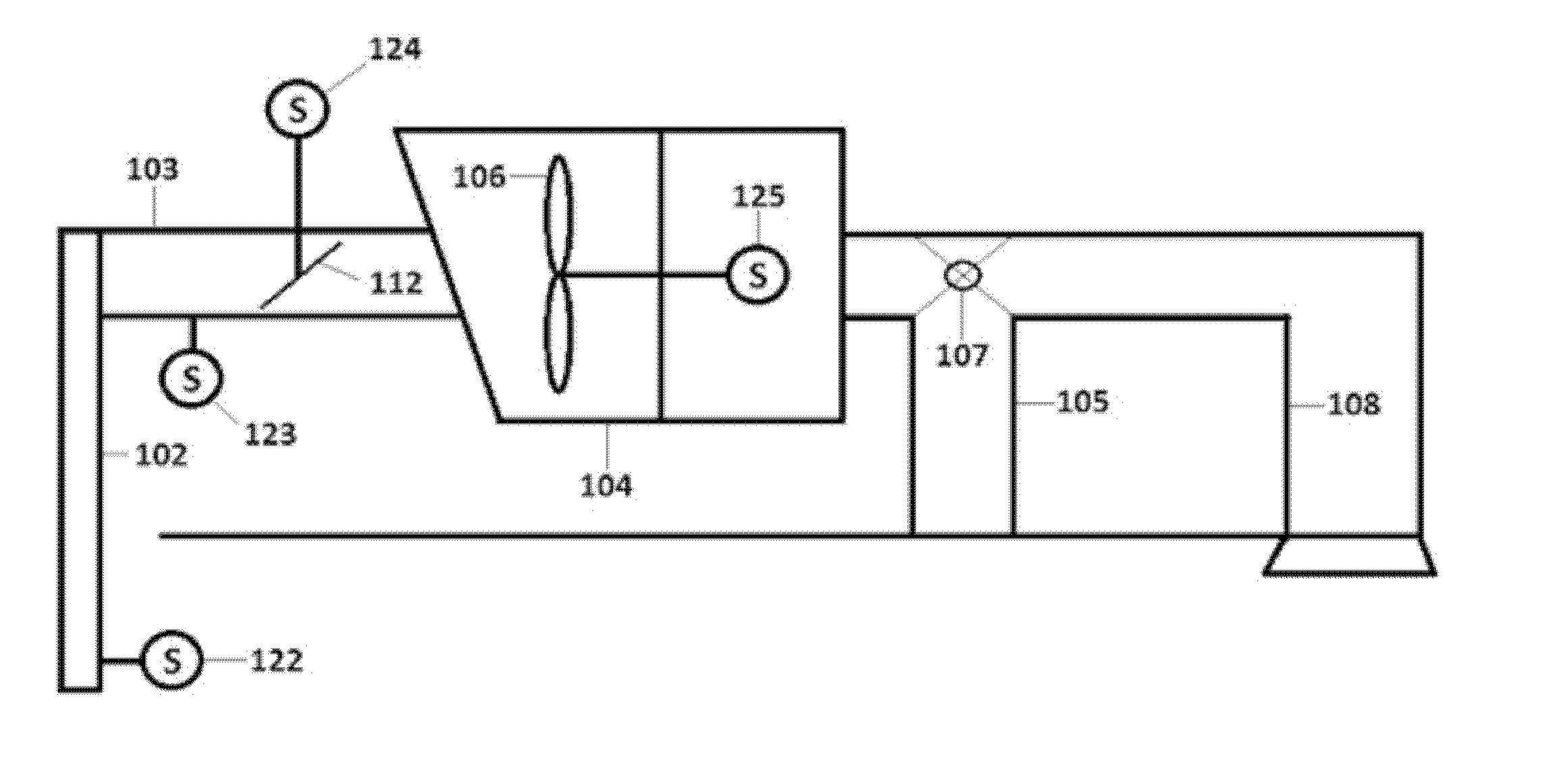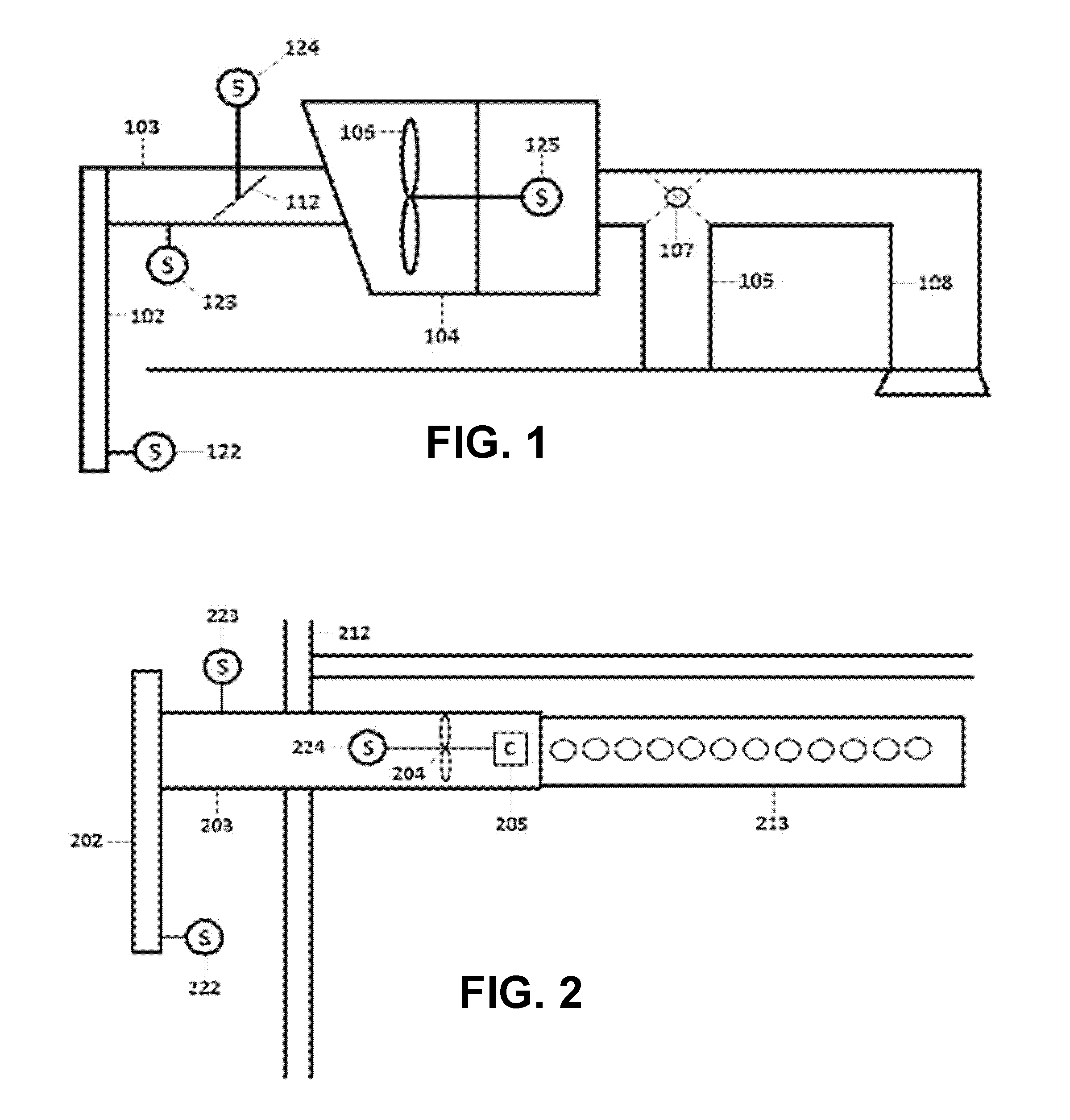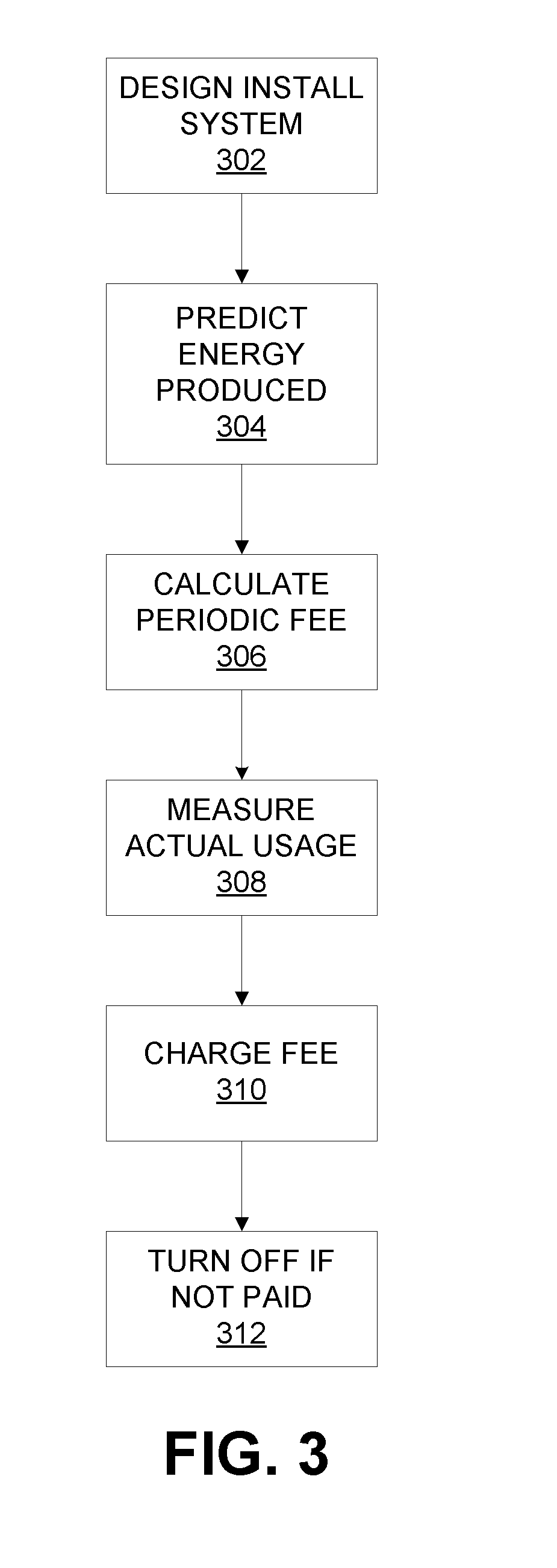Solar air thermal energy system and energy purchase agreement method
a solar energy and thermal energy technology, applied in the field of solar energy, can solve the problems of complex retrofit construction, increased cost of fossil fuels and/or electricity to heat buildings, and lack of financial structur
- Summary
- Abstract
- Description
- Claims
- Application Information
AI Technical Summary
Problems solved by technology
Method used
Image
Examples
third embodiment
[0016]Reference will be made in detail to embodiments of a system and method that satisfies the need for financing the system cost and the installation of a solar hot air system and charging a periodic fee based on the energy output of the system or the energy displaced by the system from the existing building system. A first exemplary embodiment of a system according to the present invention includes perforated solar hot air collector panels, spacing dips, extruded vertical bars, duct work to connect to a ventilation system, decorative capping, sensors to determine air flow and temperature, calculating means for determining a periodic fee amount of energy produced, and means for turning off the system in the event fees are not paid. A method according the present invention may include the steps of designing and installing a solar hot air system to a customer's building, calculating a periodic fee to be charged to the customer, measuring solar hot air system production, and charging...
first embodiment
[0017]FIG. 1 is a schematic diagram of a solar hot air system 100 including a thermal collector 102 that allows air to enter the system 100 either at the collector surface via perforations, at the top, side or bottom of the collector cavity via appropriately sized intake vents, or from the interior of the space when recirculation of air through the solar hot air system is used. The thermal collector 102 captures solar energy by heating the air within the collector 102, thereby transferring solar energy to the heated air. The air leaves the thermal collector 102 via a conduit, for example, a duct, grill, or wall penetration 103 connected to the thermal collector 102 and travels to a facility using the heated air, for example, a building. The heated air may enter the building, for example into an existing or fitted air intake system 104. Such an air intake system 104 may already be present or may be added to the building to meet the fresh air demands of the building. As shown in FIG. ...
second embodiment
[0025]FIG. 2 is a schematic diagram of a system 200 according to the present invention. Referring to FIG. 2, the heated air from a solar thermal collector 102 may be directly piped into a building space 212 through a duct 203 and driven by a fan 204 into the space 212 through a distribution duct 213. Such direct piping may displace the need for a fresh air system connected to the space 212 to provide lower temperature fresh air. The controls in FIG. 2 may be connected to temperature monitoring devices and control units that may communicate with existing control technologies of the building to optimize the use of pre-heated air over conditioned air from the heating system of the building.
[0026]In the same or another embodiment, commercially available pre-configured monitoring equipment may be installed to measure the production of the system 200 and usage at the collector 222.
[0027]In the same or another embodiment, one or more sensors may be connected at one or more locations within...
PUM
 Login to View More
Login to View More Abstract
Description
Claims
Application Information
 Login to View More
Login to View More - R&D
- Intellectual Property
- Life Sciences
- Materials
- Tech Scout
- Unparalleled Data Quality
- Higher Quality Content
- 60% Fewer Hallucinations
Browse by: Latest US Patents, China's latest patents, Technical Efficacy Thesaurus, Application Domain, Technology Topic, Popular Technical Reports.
© 2025 PatSnap. All rights reserved.Legal|Privacy policy|Modern Slavery Act Transparency Statement|Sitemap|About US| Contact US: help@patsnap.com



